This is just a post I felt the need to write for some inexplicable reason.
Recently I was messing around with the few bits of software I had on my new laptop and created this... alternative birthday song. To many of you, you'll listen with horror as the squeaking tones and dissonant harmonies scrape at your eardrums. Others might find it quite an interesting and fun arrangement.
I figure it's a good idea to explain just what's going on so you too can enjoy the masterpiece. (...)
Circle of Fifths
No matter what key your music is in, it will be related to other keys in some way. The Circle of Fifths is a neat way to showcase these relationships and also work as a great tool for songwriting. It looks like this:
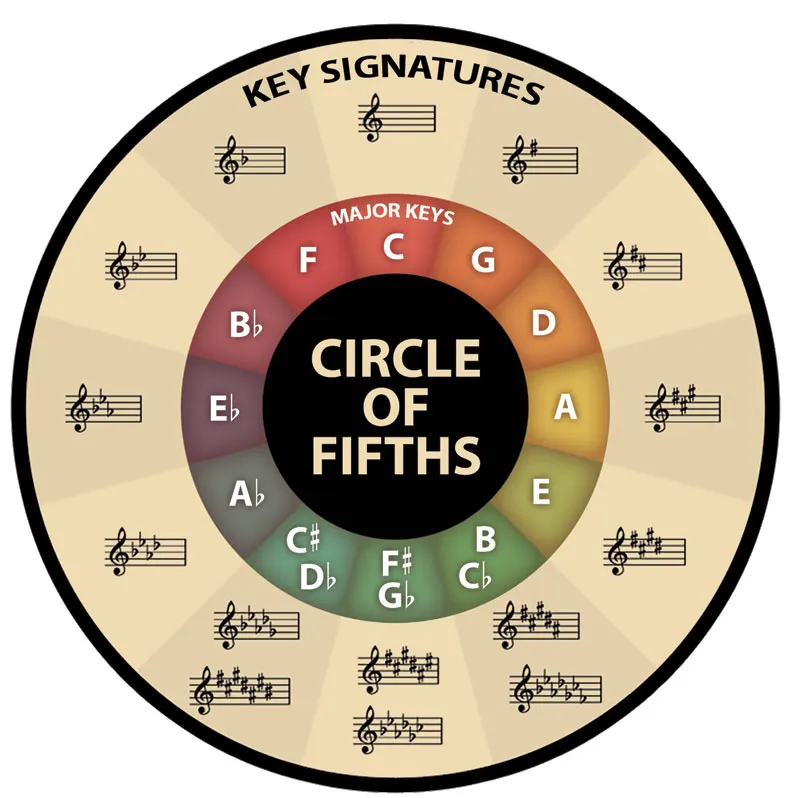
I'll avoid going into an actual theory lesson, but you'll notice a few patterns right off the bat:
The sharps (#) increase in number as you go clockwise, and the flats (b) increase anticlockwise, where they all meet in a big jumbling mess at 6 O'clock.
The notes intervals increase by a fifth going clockwise, and a forth anti-clockwise. Simply put, from C to G, you have C, D, E, F and G = Five notes. From C to F, you only have four.
These features are important to be familiar with. In lots of Jazz - and indeed loads of other music - a progression of chords tend to follow the anti-clockwise path for a short distance to create a very recognizeable sound:
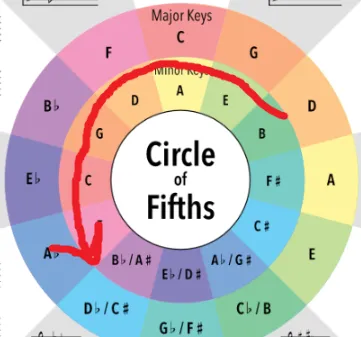
In Clapton's Autumn Leaves (originally by Joseph Kosma, 1945), the chords go as follows: Bm, Em7, A7, Dmaj7, Gmaj7, C#dim, F#7 and back to Bm.
Aside from slight alterations to chords to make them major, minor or diminished (urban defition: very minor) to fit into the key of B minor, the song follows the clock a full 180 degrees around.
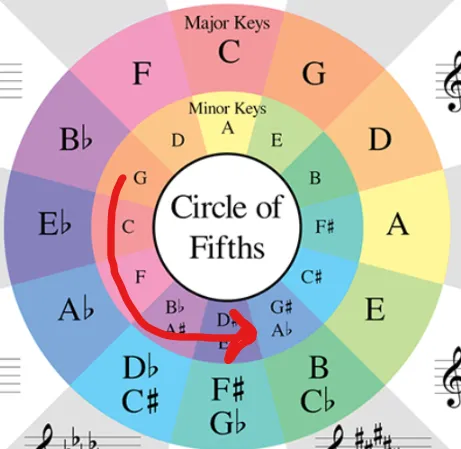
This is partly the foundation of the birthday song I made above. Starting in G minor, the track moves to C, F, Bb, Eb, and then finishes with A and D.
So when you remove the melody and break the chords down a bit, you get this:
Parallel motion
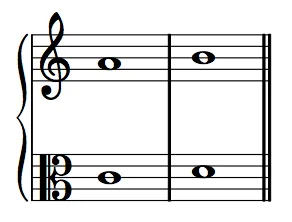
There's more movement than static chords, however. There's something called parallel motion which is generally a big no-no in harmonious music. Basically, each note in a chord move up or down in exactly the same motion to the next chord. This is quite grating on our ears for whatever reason and thus is considered 'against the rules' in classical songwriting.
Tritone substitution
A tritone is an interval of 3 whole tones, also known as either a diminished 5th or an augmented 4th. All the same. On the wheel clock, tritones are handily positioned opposite of each other:
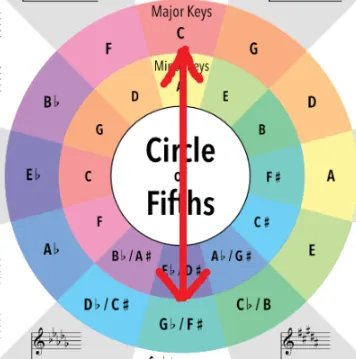
These tritone substitutions are simply passing chords that move from one of the main chords to the next main chord in a chromatic style (moving up or down in semi-tones).
Chromaticism is not typically in any key, so this contributes more to the dissonant effect you can hear. Take another listen to the track above and see if you can spot them!
Bitonality
Finally, I moved the tonal centre of the melody up a minor 3rd - from D to F. This means the melody is in the key of F major while the harmonies discussed here are all in the key of D minor. Multiple keys played at the same time are called bi-, or polytonal.
The pleasant Jazz progression
So now that you've heard and understood such a heinous track, my next music post will be a short tune based on the circle of fifths, but I promise to make it sound nice.
@elliotjgardner, you in?
Image sources: credit to Sienna Woode